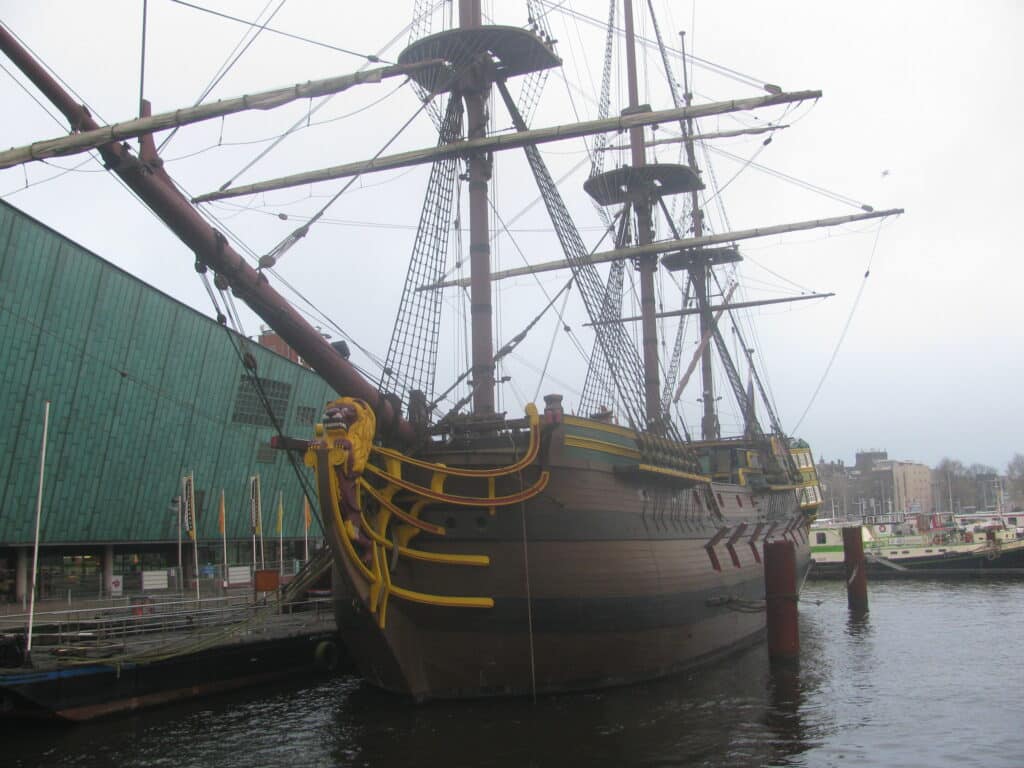VOC (Dutch East India Company) is crucial to the history of the Netherlands.
For over 200 years, the VOC has brought the Netherlands international power and wealth.
VOC: article summary
How did VOC come into being?
The VOC was founded in 1602 to trade with Mughal India, the source of most European cotton and silk. The Dutch government soon granted the company a 21-year monopoly on the spice trade with South Asian countriesand the company took off from there.

What is VOC?
In the early 1600s, the company became the first publicly listed company. In addition to its global reach and transnational employees, this is one of the reasons why the VOC has been so successful. a precursor of modern multinational companies.
The company had powers that today's corporations would never have: it could wage war, take and execute prisoners, negotiate treaties and establish colonies. And that's what happened.
Where did VOC operate?
The company began operating in India and South Asia in general. Over the next century, it expanded its operations :
- In Mauritius
- In South Africa
- In Indonesia
- In Taiwan
- In Japan
- In Malaysia
- In Thailand
- In Vietnam
Not all these locations were permanent settlement sites or even permanent trading posts. But thanks to these commercial sites, the VOC quickly made a name for itself.
What was happening in the Netherlands when the company was in business?
The VOC was apparently founded after the return of a Dutch ship from Southeast Asia filled with highly profitable spices in 1596.
Basically, the Netherlands was under threat. The country had just declared its independence from Spain in 1581, forming the Dutch Republic. A fairly ambitious approachThe Spanish had the strength of half of Europe behind them at the time.
Given this vulnerability, you can see the advantages of drawing wealth from outside the small Dutch Republic and using it to strengthen the newly created country against foreign control.
VOC created the system of global capitalism
The VOC is considered to be the first modern multinational company, and was the first to use many of the features we associate with modern corporations: think shareholders, corporate identity, legal personality and so on.
This set of innovations meant that the company could mobilize wealth in a new way. that only monarchies were capable of, giving it unprecedented power.
When it came to acquiring this wealth, the VOC was also innovative. This made Amsterdam the financial capital of today's world, enabling the population to invest in the company.
How did the East India Company come to an end?
Given the scale of the company, one might imagine that its demise would have been catastrophic for the status of the Netherlands.
You might also wonder what happened to this company to make it collapse in 1800. After all, controlling a large part of the spice trade gives a company a pretty big advantage.
However, it was a sense of modernity that drove the Compagnie des Indes to extinction. Other means were put in place to keep trade with Asia alive, while protecting the country from bankruptcy.
The VOC is an important part of Dutch history. You can still see its influence at Amsterdam Maritime Museum. If it is now extinct, she leaves behind a prosperous country.
What to do in Amsterdam in 1 day, 2 days, 3 days, 5 days, a week?
Whatever the length of your stay, I invite you to download my special Amsterdam guide.
It's free and in PDF format.
All you have to do is tell me below which e-mail address you'd like to receive it at.
EDIT: you can't enter your email?
Take the quiz at the top of this article and you'll be able to register your email address to receive the special Amsterdam guide!
Leave a Reply